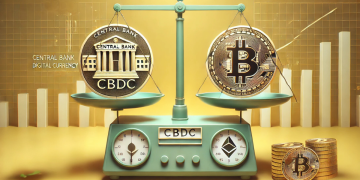The cryptocurrency market thrives on momentum, speculation, and accessibility. One of the most critical milestones for a token is its listing on a recognized exchange, particularly those with a history of compliance and high liquidity, such as Coinbase, Binance, Kraken, or regulated platforms in various jurisdictions. Listings not only enhance visibility but also provide liquidity and, in many cases, a stamp of legitimacy that influences investor perception. However, how much does an exchange listing actually alter the trajectory of a coin’s price and adoption?
To answer this, we must dissect three crucial stages: the pre-listing anticipation, the immediate post-listing price action, and the long-term adoption rates.
Pre-Listing Anticipation: The Build-Up Phase
Before a token is listed on an approved exchange, the market often goes into overdrive with speculation. This period is fueled by community hype, project announcements, insider knowledge leaks, and broader narratives surrounding the token’s ecosystem.
- Hype Creation:
A listing on a high-profile exchange is seen as validation. The community typically views it as confirmation that the token has passed certain due diligence and regulatory checks. The announcement itself often drives buying pressure, even before the token is available on the exchange. - Price Ramps and Front-Running:
Historically, projects that announce listings experience upward price movements weeks—or even days—before the actual event. Traders who anticipate the liquidity boost and exposure often buy the rumor and sell the news. For example, coins like Chainlink (LINK) and Polygon (MATIC) saw sharp rallies leading up to their listings on major exchanges. - Psychological Catalysts:
Anticipation is not just technical but also psychological. Investors equate exchange listing with legitimacy. A Coinbase listing, often referred to as the “Coinbase Effect,” has been compared to a tech startup going public, giving retail investors easier access and boosting confidence in the project.
Immediate Post-Listing Price Action: The Reality Check
Once a token officially becomes tradable on a major exchange, the hype often collides with reality.
- The Coinbase Effect and Its Variations:
Historically, coins listed on Coinbase would experience dramatic price surges on the day of listing. For instance, in 2021, Shiba Inu (SHIB) surged nearly 40% after its Coinbase Pro debut. However, over time, this effect has diminished as investors have learned to anticipate and trade around it. - Liquidity Spike:
An immediate influx of trading volume typically follows a listing. Institutional traders and retail users alike jump in, leading to increased volatility. This can result in sharp upward movements followed by equally dramatic corrections as early speculators cash out. - Volatility as a Double-Edged Sword:
While liquidity increases, so does exposure to speculative trading. Some tokens suffer from sharp crashes within hours of their listing, especially if the market perceives the valuation to be inflated. Tokens without strong fundamentals often fail to sustain the post-listing hype. - Exchange-Specific Dynamics:
The impact also depends on which exchange is doing the listing. A Binance listing, given its global reach and trading volumes, often results in bigger immediate effects compared to smaller platforms. Meanwhile, Coinbase listings have strong reputational impact, particularly in the U.S. market.
Long-Term Adoption Rates: Beyond the Hype
The true test of a coin’s success lies not in the announcement or the first week of trading but in its ability to sustain demand over the long run.
- Sustained Liquidity:
Approved exchanges bring long-term liquidity. This provides confidence for institutional investors who might have avoided illiquid, hard-to-trade tokens. Liquidity also lowers slippage risks, making the token more attractive for use in trading strategies or DeFi applications. - Increased Accessibility and User Base:
Listings make coins accessible to millions of retail investors who prefer regulated platforms. For example, when Ethereum (ETH) and Solana (SOL) were listed across a wider range of exchanges, they experienced not only trading growth but also broader community adoption. - Legitimacy and Institutional Interest:
Tokens listed on approved exchanges are more likely to attract institutional attention. Funds that follow compliance-heavy mandates may only allocate to assets listed on regulated platforms. This boosts both visibility and long-term demand. - Not All Coins Benefit Equally:
The sustainability of a token post-listing depends heavily on fundamentals. Strong projects with active ecosystems, clear use cases, and developer engagement tend to hold on to their exchange-driven gains. In contrast, purely hype-driven tokens often fade once the initial excitement dissipates. - The Dilution of the Listing Effect:
As the market matures, the effect of exchange listings is less dramatic. Early in crypto’s history, listings were rare and seen as monumental milestones. Today, with thousands of tokens vying for attention and exchanges listing projects at a faster pace, the psychological and financial impact has become more subdued.

Patterns and Lessons for Investors
- Anticipate the Announcement, Not the Listing:
Much of the upside often occurs before the actual listing, meaning investors chasing the price on listing day may find themselves buying the top. - Use Liquidity Wisely:
Listings provide liquidity that can be both an opportunity (easy entry/exit) and a trap (amplified volatility). Traders should adjust risk management accordingly. - Differentiate Between Speculation and Fundamentals:
While exchange listings offer visibility, the long-term trajectory depends on whether the project solves real problems, has community support, and maintains developer momentum. - Don’t Overestimate Exchange Legitimacy:
Just because a coin is listed doesn’t mean it’s safe or destined to succeed. Exchanges sometimes list speculative assets to capture trading fees, so investors should still conduct independent research.
Conclusion
Coin listings on approved exchanges undeniably play a pivotal role in shaping market behavior. They drive pre-listing hype, create intense short-term volatility, and provide long-term accessibility that can boost adoption. However, not every coin benefits equally, and not all listings lead to sustainable growth. For investors, the key is to view exchange listings not as an endpoint but as one factor among many in evaluating a token’s long-term potential.
Ultimately, while exchange approval adds legitimacy and liquidity, the sustainability of success depends on fundamentals—technology, community, and real-world application. In other words, a listing may light the spark, but only a strong project can keep the fire burning.































